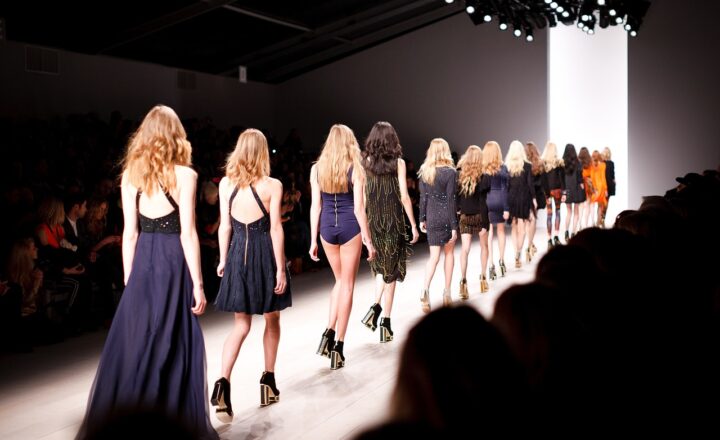
Fashion is an ever-evolving realm where creativity meets culture, and the individuals who have left a profound mark on the industry are no less than icons. These fashion icons have influenced not just how we dress but also how we view beauty, gender, and identity. This article will delve into some of the most influential fashion icons throughout history and examine their lasting impact on the industry.
1. What Makes a Fashion Icon?
A fashion icon is a person who significantly influences fashion trends, often through their unique style, boldness, and ability to break norms. They can convey messages about culture, identity, and even politics through their clothing choices.
Common traits of fashion icons include:
- Innovative Style: Fashion icons are typically trendsetters who introduce new styles or reinterpret existing ones in exciting ways.
- Cultural Impact: Their influence often extends beyond fashion, impacting societal views on gender, race, and body image.
- Authenticity: Fashion icons maintain a sense of authenticity, often merging personal experiences or stories into their fashion choices.
With this definition in mind, let’s explore some pivotal figures who have truly redefined the fashion landscape.
2. Coco Chanel: The Pioneer of Modern Women’s Fashion
Coco Chanel is arguably one of the most significant fashion icons in history. Chanel revolutionized women’s fashion by breaking away from the constraints of the corseted silhouette prevalent in the early 20th century. She introduced a more relaxed and casual elegance, epitomized by the iconic Chanel suit and the classic little black dress.
Key Contributions:
- The Chanel No. 5 Perfume: Launched in 1921, it remains one of the best-selling fragrances globally, showcasing the link between fashion and lifestyle products.
- The Boyfriend Style: Chanel popularized wearing men’s clothing as fashionable, bringing a sense of comfort and style to women’s wear.
- Timeless Accessories: Her introduction of the quilted handbag and pearl necklaces is still influential in the world of luxury accessories today.
Chanel’s legacy continues to inspire contemporary designers and remains a touchstone in defining elegance and sophistication in fashion.
3. Audrey Hepburn: The Embodiment of Elegance
Audrey Hepburn’s style transcended the silver screen and firmly established her as a fashion icon of the 20th century. Known for her captivating looks in films like “Breakfast at Tiffany’s” and “Roman Holiday,” Hepburn’s style is synonymous with grace and elegance.
Key Contributions:
- Classic Breakfast at Tiffany’s Look: The black Givenchy dress from this film remains iconic and is considered a benchmark for timeless style.
- Emphasis on Simplicity: Hepburn promoted a minimalist approach to fashion that emphasized quality over quantity, influencing trends towards understated elegance.
- Humanitarian Efforts: She used her fame to champion humanitarian causes, highlighting the impact an icon can have beyond fashion.
Her partnership with designer Hubert de Givenchy not only altered how we view celebrities in fashion but also highlighted the importance of collaboration between fashion and film.
4. David Bowie: The Gender-Bending Muse
David Bowie was a musical genius, but his influence on fashion is equally compelling. Known for his chameleon-like abilities, Bowie transcended traditional gender norms in fashion, creating iconic looks that have inspired generations.
Key Contributions:
- Ziggy Stardust and Glam Rock: Bowie’s alter-ego introduced flamboyant costumes, broken gender stereotypes in fashion, and promoted sexual fluidity.
- Bold Makeup Choices: He popularized makeup as a male accessory, challenging traditional perceptions of masculinity in fashion.
- Customization and Individuality: Bowie’s style emphasized the importance of self-expression and the idea that fashion can be a form of identity.
Bowie’s impact on fashion is enduring and continues to inspire both designers and everyday individuals to embrace diversity and creativity in their styles.
5. Naomi Campbell: The Supermodel Revolution
Naomi Campbell became a household name in the fashion industry and an enduring symbol of strength and beauty. As one of the original supermodels, her influence has been pivotal in elevating the status of models in the fashion world.
Key Contributions:
- Breaking Racial Barriers: Campbell was one of the first black models to achieve global fame, paving the way for greater representation in the industry.
- The Supermodel Phenomenon: She redefined the role of models, showcasing that they could possess beauty, talent, and charisma, making them celebrities in their own right.
- Activism and Philanthropy: Campbell has used her platform to advocate for diversity and has worked on numerous humanitarian efforts, showcasing the power fashion can have in driving social change.
Campbell’s legacy continues to inspire and challenge the fashion industry regarding the representation of diverse voices and perspectives.
6. Conclusion: The Evolving Role of Fashion Icons
Fashion icons play a crucial role in the evolution of the industry. They challenge norms, redefine standards, and encourage individuals to express their uniqueness through clothing. By examining the impact of these icons, we can appreciate how deeply intertwined fashion is with culture, identity, and self-expression.
As we move forward, the future of fashion will undoubtedly include new voices that continue to shape the landscape, making it essential for all of us to remain open to innovation and change within this vibrant industry.
As fashion continues to evolve, may we never underestimate the influence of these icons who have taught us that fashion is more than just clothing—it is a reflection of who we are and what we stand for.






